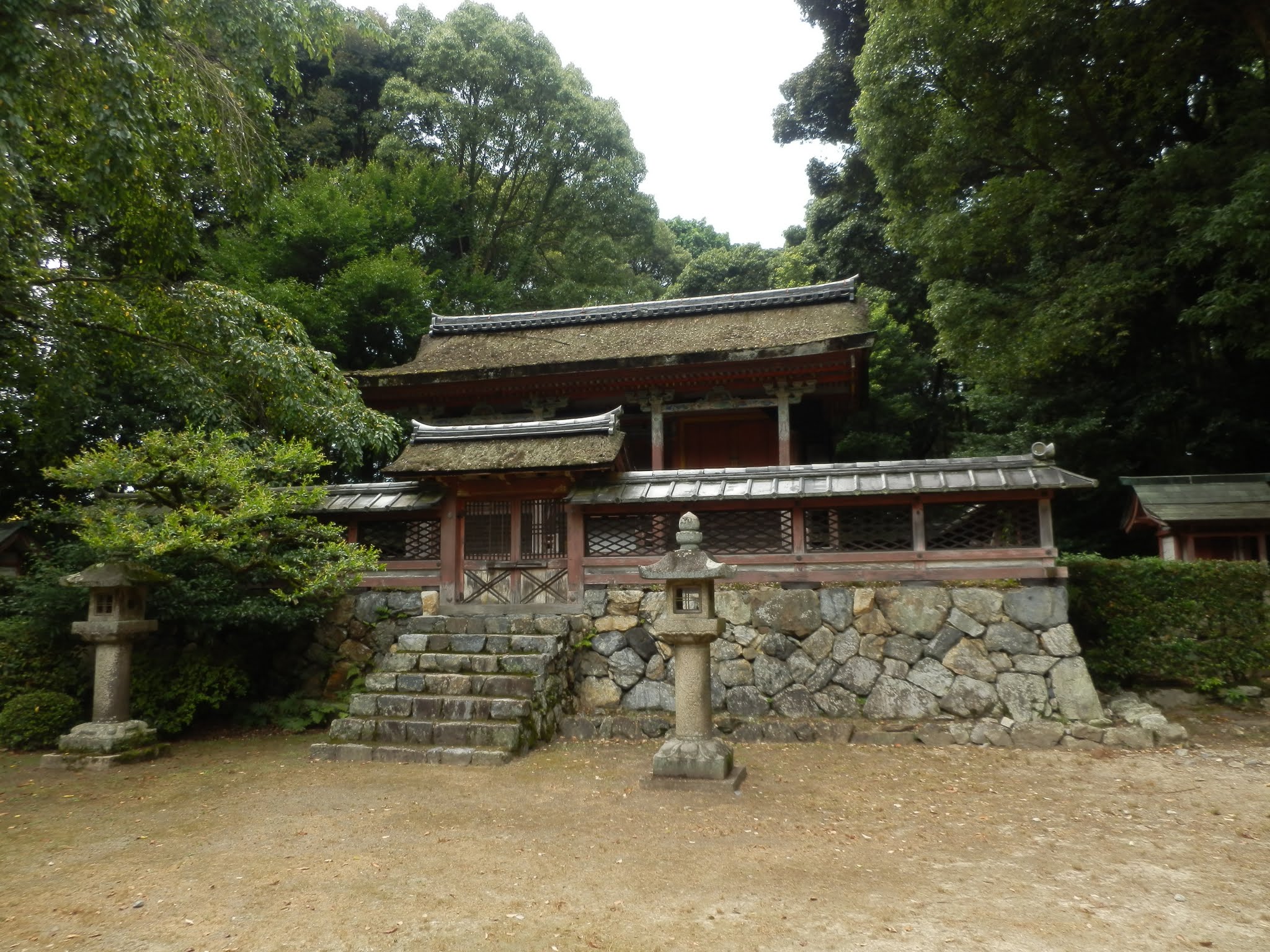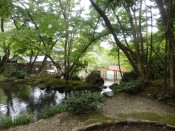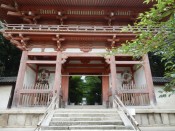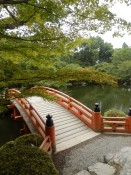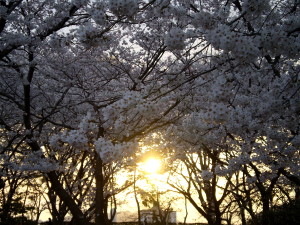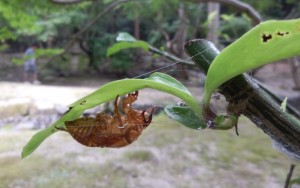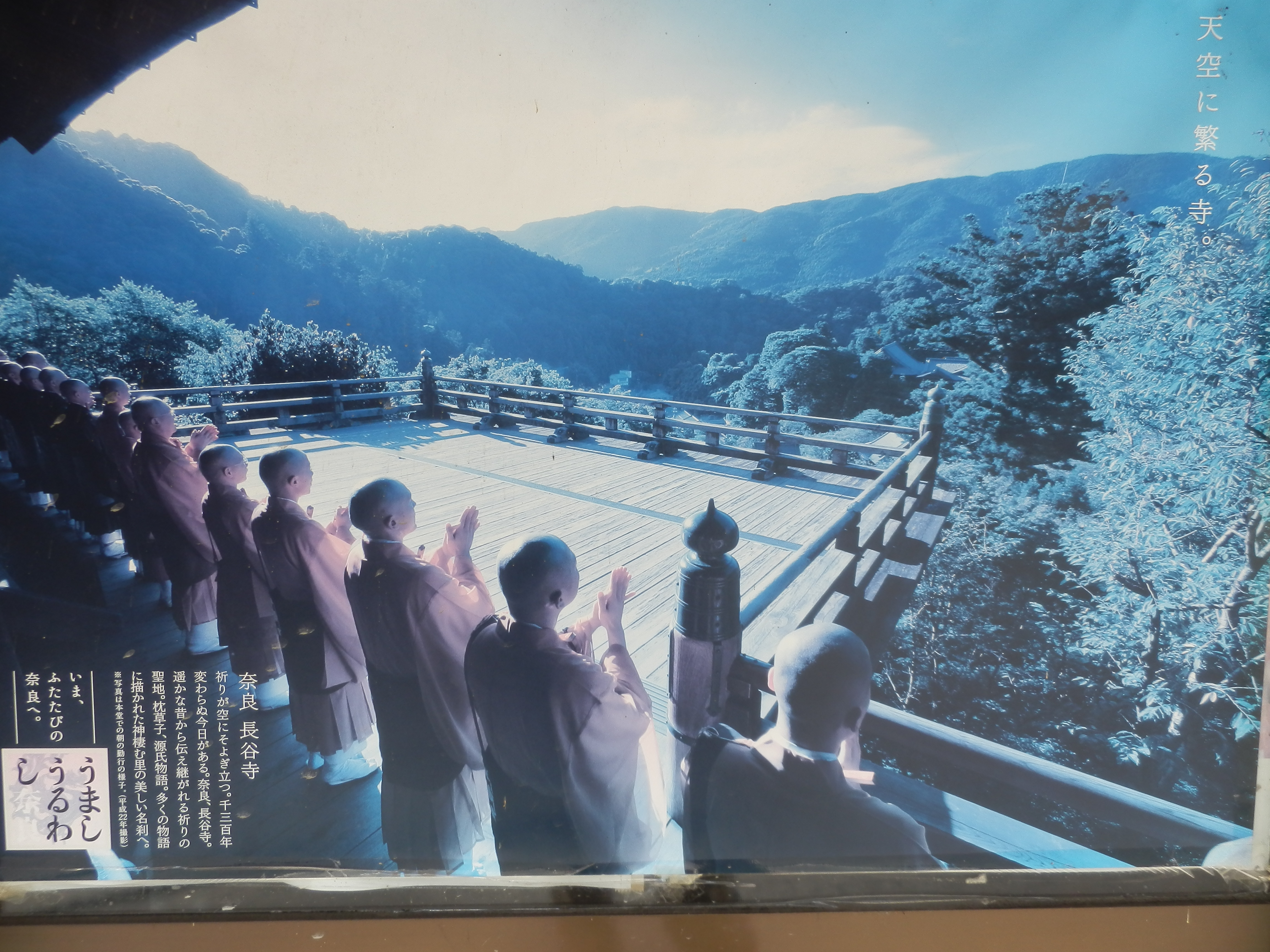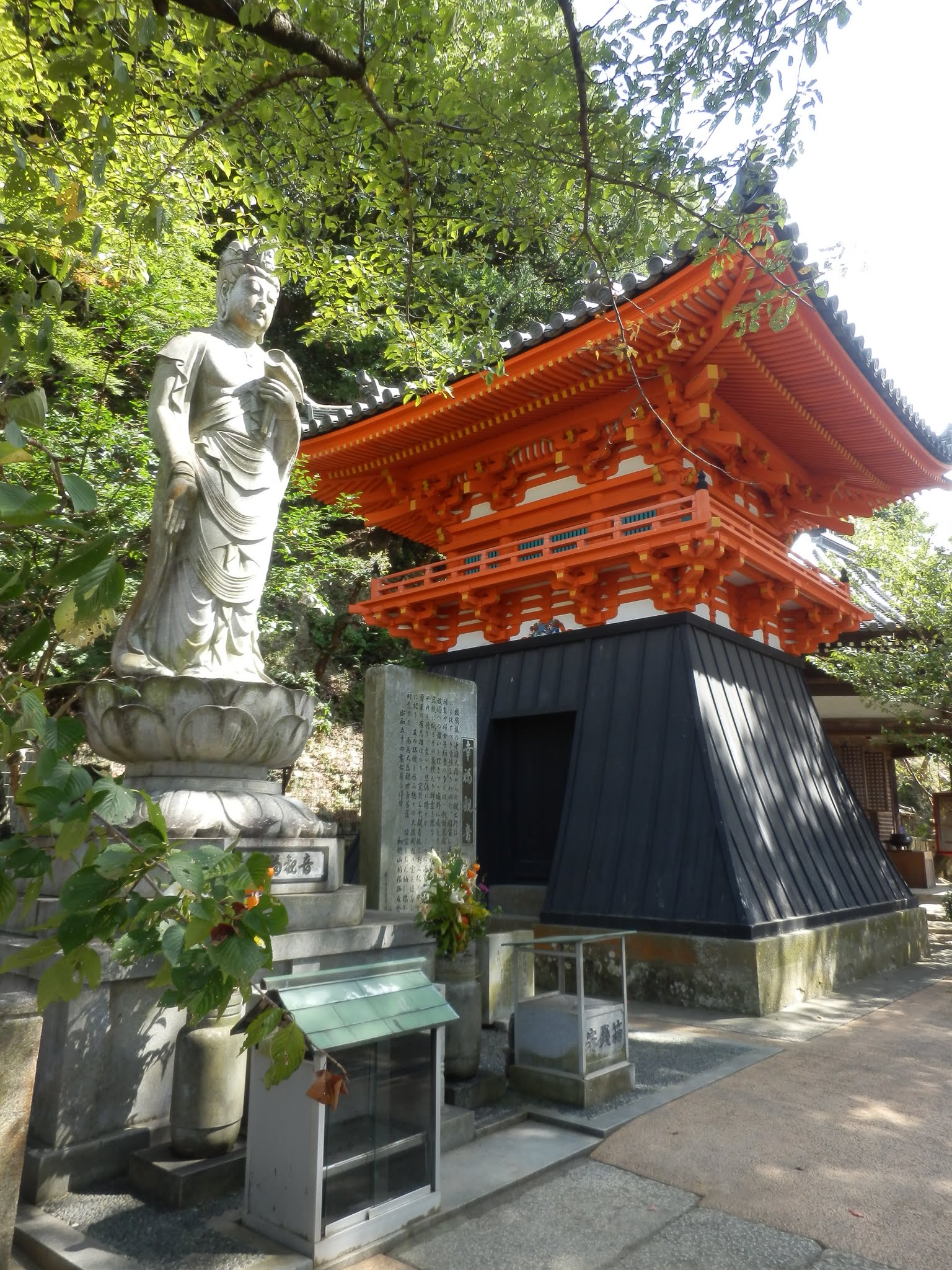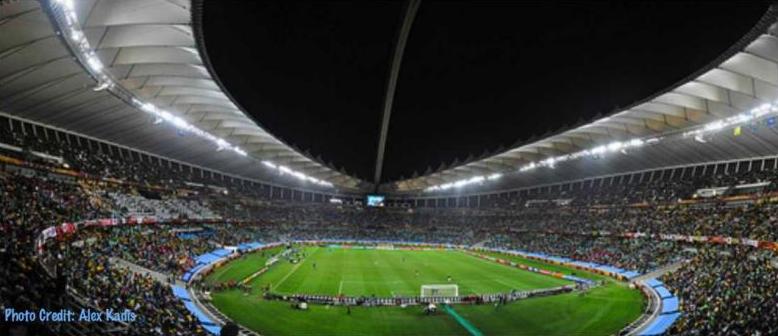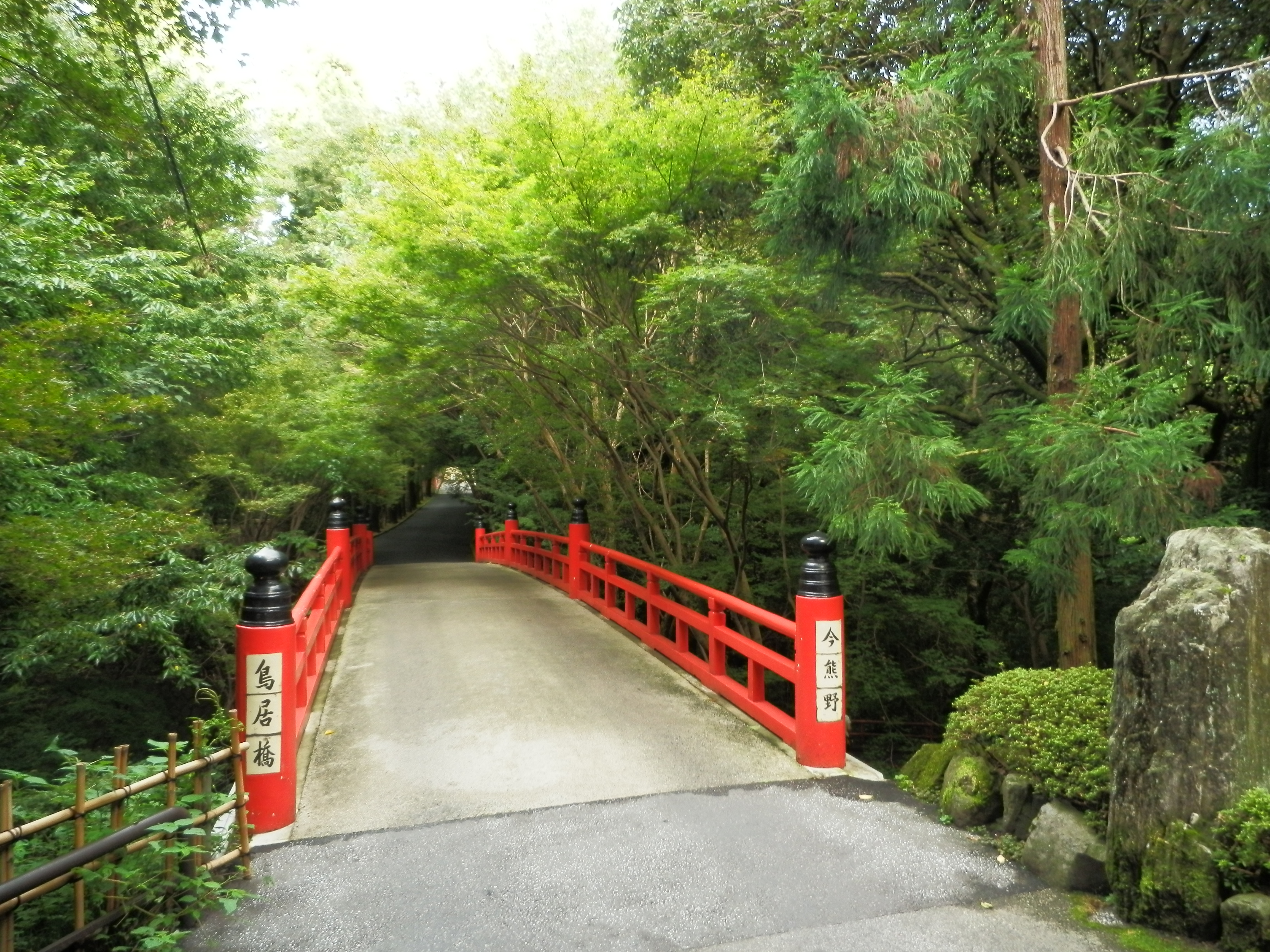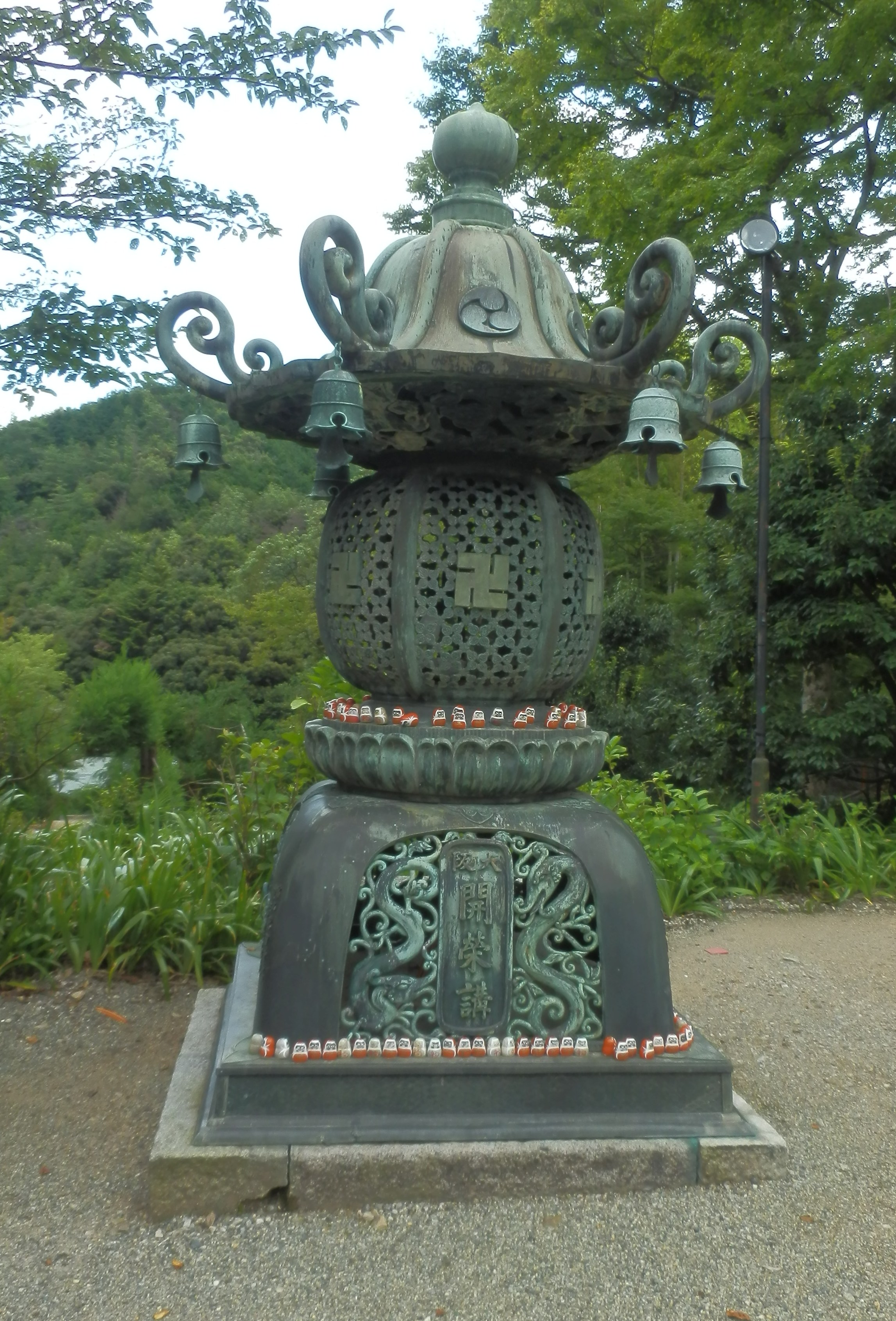Saigoku Kannon Pilgrimage: 上é†é†å¯º – Kami Daigo-ji
If you’re looking for a beautiful and challenging hike this summer, take a trip to Kyoto’s Kami Daigo-ji, which is temple number 11 of our 33 temple pilgrimage. Daigo-ji temple grounds is expansive, one of the largest temple complexes in Kyoto; it has three separate sections (each with its own admission): Sanbonin (former residence of head priest), Shimo Daigo-ji (lower Daigo-ji), and Kami Daigo-ji (upper Daigo-ji). While the museum and features of the Shimo Daigo-ji area are certainly worth exploring, I’m going to focus on the Kami Daigo-ji section, as it is the temple connected with our Kansai pilgrimage.
Daigo is the Japanese name for ghee, a kind of milk-ambrosia made in India which is also a metaphor for the teaching of Buddha. The temple is named for this connection. Unfortunately, when I attempted to visit Kami Daigo-ji (without doing enough research), 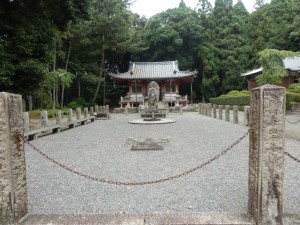 I found the pathway leading up to the upper temple gated, as the area was still under construction following a lightning strike fire which occurred in 2008. They were still giving stamps in the lower Daigo-ji area for those pilgrims not allowed to make the climb (because the Juntei-do burned down completely in that lightning strike, you will still get your pilgrim book stamped in Shimo Daigo-ji).
I found the pathway leading up to the upper temple gated, as the area was still under construction following a lightning strike fire which occurred in 2008. They were still giving stamps in the lower Daigo-ji area for those pilgrims not allowed to make the climb (because the Juntei-do burned down completely in that lightning strike, you will still get your pilgrim book stamped in Shimo Daigo-ji).
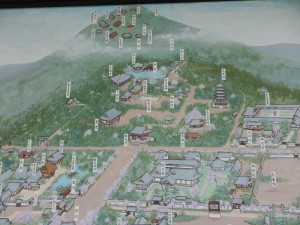 Happily, the path (if not the Juntei-do itself) is now open, and travelers are giving online reviews of the strenuous hike to the upper temple. Kami Daigo-ji is the oldest part of the temple, founded by Rigen Daishi in 874. Upon hearing the chirping of a sacred bird while practicing his mountain asceticism in a hermitage he built on the top of the mountain, he carved two Kannon images: one of Nyoirin Kannon (Kannon with the wish-fulfilling jewel and wheel of Buddhist teachings), which is enshrined in the Nyoirin-do on top of the mountain, and one of Juntei Kannon (Mother Kannon), which was enshrined in the Juntei-do, the main temple of the Kami Daigo-ji complex.
Happily, the path (if not the Juntei-do itself) is now open, and travelers are giving online reviews of the strenuous hike to the upper temple. Kami Daigo-ji is the oldest part of the temple, founded by Rigen Daishi in 874. Upon hearing the chirping of a sacred bird while practicing his mountain asceticism in a hermitage he built on the top of the mountain, he carved two Kannon images: one of Nyoirin Kannon (Kannon with the wish-fulfilling jewel and wheel of Buddhist teachings), which is enshrined in the Nyoirin-do on top of the mountain, and one of Juntei Kannon (Mother Kannon), which was enshrined in the Juntei-do, the main temple of the Kami Daigo-ji complex.
Kami Daigo-ji is the only temple in Japan to feature Juntei Kannon as its main enshrined image (Honzon). Emperor Daigo is said to have prayed to this Kannon for the successful production of an heir, after which his wife gave birth to twin sons who each served as emperor in succession. The image is still thought to bring fertility and easy childbirth.
Until recently, women were forbidden to enter the sacred mountains, being restricted to the Nyonin-do at the base of the trail leading up to Kami Daigo-ji. The hike up the mountain is tough, and is undertaken by pilgrims as an offering on behalf of all suffering beings.
As you begin the hike from the Shimo Daigo-ji area, you will encounter a series of statues which you can splash with water as a purification ritual. Included among them are Jizo, protector of travelers, Kobo Daishi, founder of the Shingon school of Buddhism, Fudo Myo, the light king, and Amida Buddha.
The hike takes about an hour and fifteen minutes, and along the path you will see ancient stone markers about every 109 meters (a measurement called a “cho†and the path is 20 cho in length). You will also see other ancient stone markers and memorials, like the turtle carrying a monument on his back and the bell that pilgrims can ring as they pass.
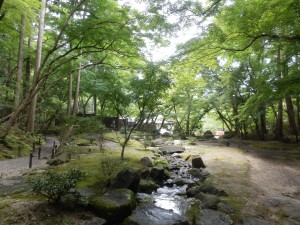 Halfway up the climb, you will see the shrine and sacred waterfall where pilgrims can drink and make offerings to the mountain ascetic deity. Past this point, the climb gets much steeper, and pilgrims on their way down offer friendly encouragement to those going up. Once you reach the complex at the top you will find several buildings, including the Pure Dragon shrine on the left, and a small shrine dedicated to the source of the spring where Rigen Daishi first built his hermitage in 864. Pure water still flows, and pilgrims may drink and fill bottles to take home.
Halfway up the climb, you will see the shrine and sacred waterfall where pilgrims can drink and make offerings to the mountain ascetic deity. Past this point, the climb gets much steeper, and pilgrims on their way down offer friendly encouragement to those going up. Once you reach the complex at the top you will find several buildings, including the Pure Dragon shrine on the left, and a small shrine dedicated to the source of the spring where Rigen Daishi first built his hermitage in 864. Pure water still flows, and pilgrims may drink and fill bottles to take home.
The main temple of Juntei Kannon is still under reconstruction. Those seeking pilgrimage stamps will get them at Shimo Daigo-ji at the Kyudaiko-do (æ—§å¤§è¬›å ‚). The Nyoirin-do (where the other image carved by Rigen Daishi) and Kaisan-do (Founder’s Hall) give impressive views, and you can see as far as Osaka on clear days.
Access
To get to Daigo-ji, take a JR train to Yamashina station (5 minutes and 190 yen from Kyoto) and get on the Tozai line (8 min and 260 yen) to Daigo station, then walk 15 minutes to the temple complex. You can also take a Keihan bus (22 or 22A) from Yamashina station. There are also direct buses (Yamashina Express) from Kyoto Station in front of Hotel Keihan leaving every 30 to 50 minutes, on which the 30 minute trip is 300 yen.
Happy trails!
Lemmon
http://www.daigoji.or.jp/index.html – Official Daigo-ji website
http://www.tripadvisor.com/Guide-g298564-i676-Kyoto_Kyoto_Prefecture_Kinki.html – A helpful description of what you can expect as you head in to hike the Kami Daigo-ji path.
http://www.tripadvisor.com/ShowUserReviews-g298564-d321455-r176398640-Daigoji_Temple-Kyoto_Kyoto_Prefecture_Kinki.html – Other traveler information about Daigo-ji (a hiking review from 2013).
http://www.daigoji.or.jp/events/events_list_e.html – annual events at Daigo-ji
